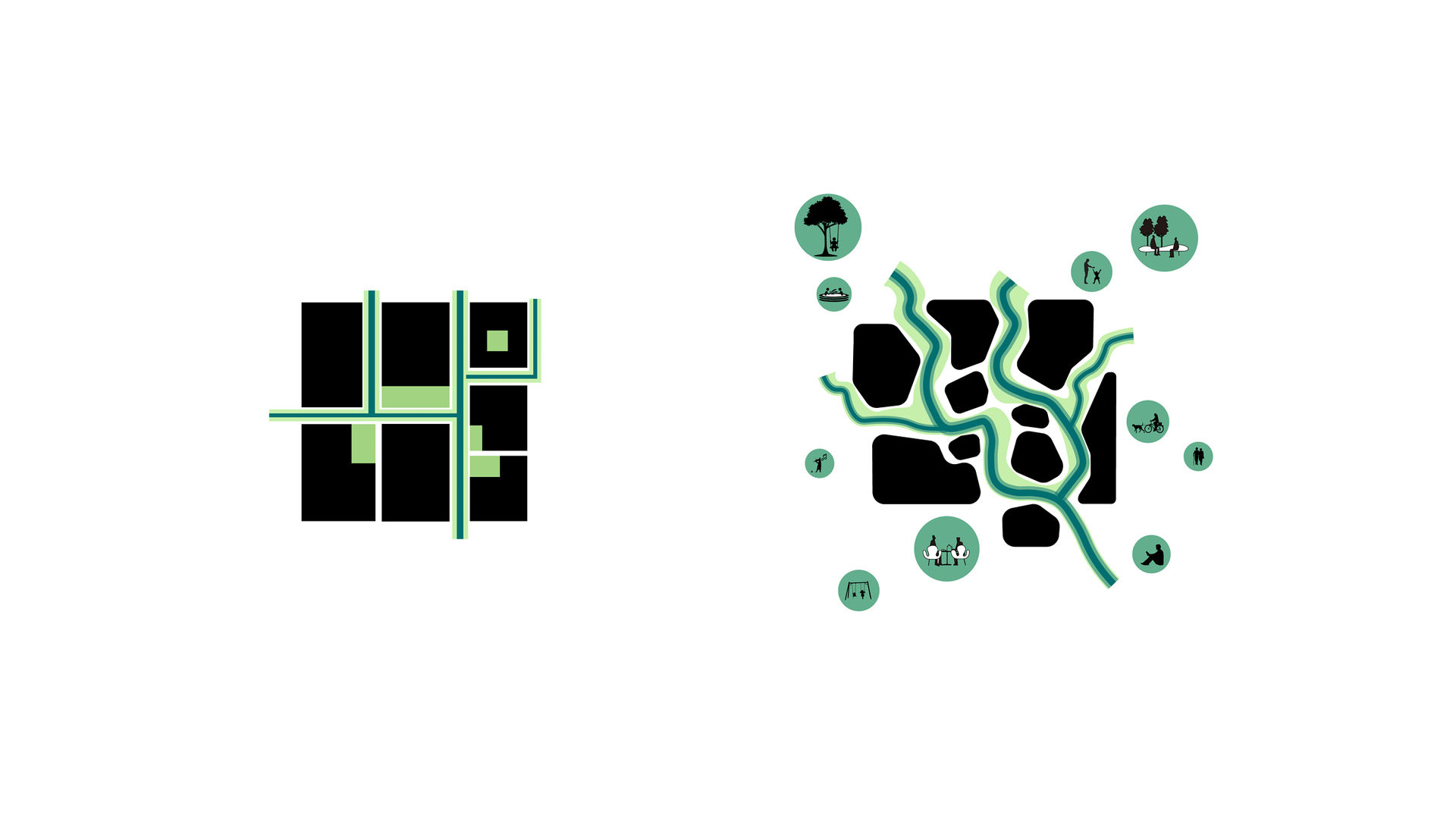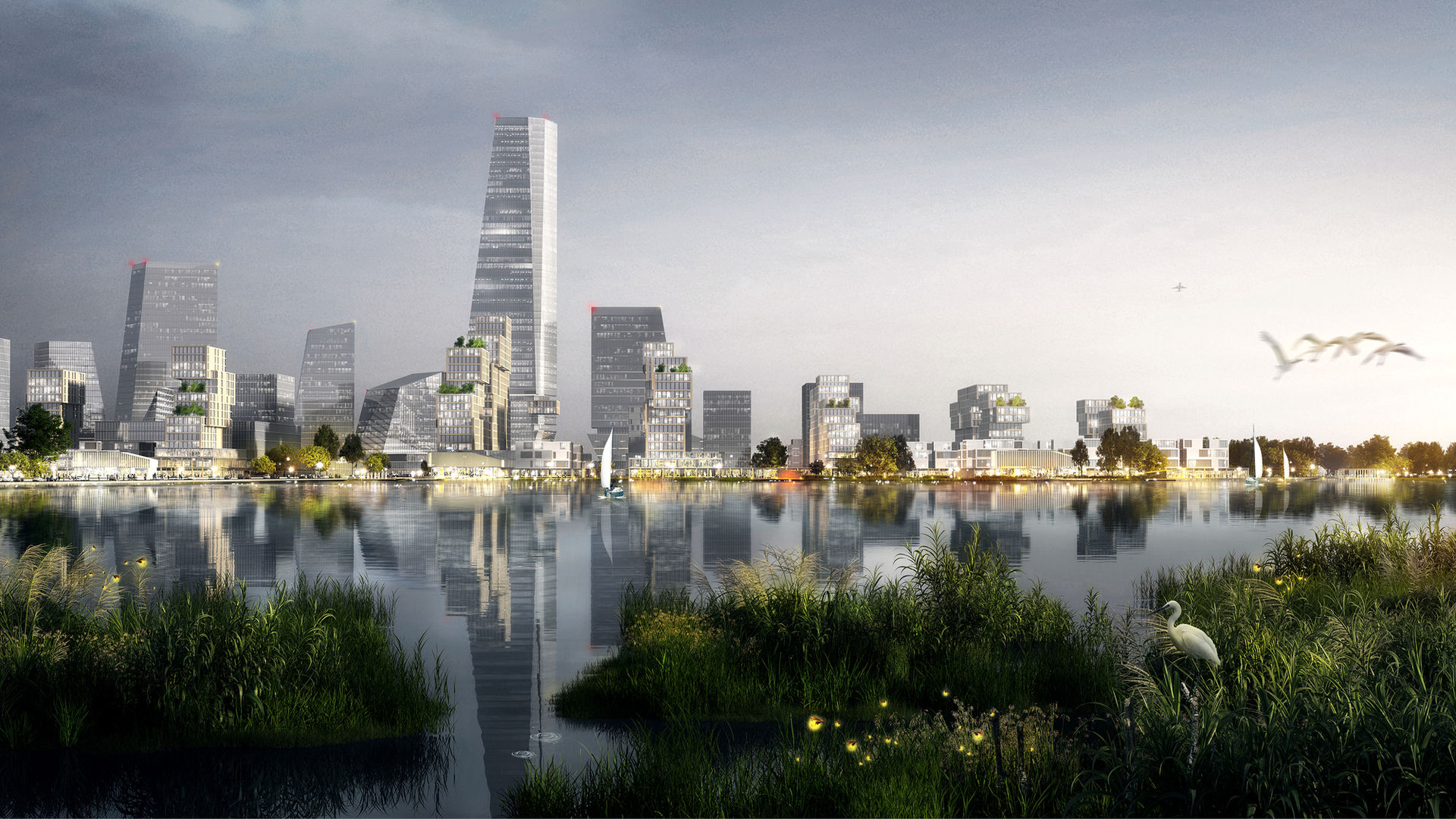
Xiakewan Science City
Located south of the Yangtze River, and on the banks of Taihu Lake, Xiakewan Science City is a district located at a critical intersection of urban and ecological development.
Xiakewan Science City
Located south of the Yangtze River, and on the banks of Taihu Lake, Xiakewan Science City is a district located at a critical intersection of urban and ecological development.
Location
Jiangyin, China
Site Size
8.000 Ha
Client
Jiangyin Municipal Natural Resources and
Planning Bureau
Collaborators
UPDIS
Images: Frontop
Timeline
2021: 1st Prize Invited Competition
Project Scope
Urban District Masterplan
Program & Themes
Mixed Use District Masterplan
GFA 2.000.000.000
Transportaion network
Regional landscape
Project Description:
Set between the Yangtze River and Tai Lake, Xiakewan is Jiangyin’s ecological heart — a landscape of wetlands, rivers, and forests that forms the foundation for a new type of science city. The Resilient Blue-Green Framework proposes a city model rooted in local ecology, where water, nature, and urban life are intertwined to create a resilient and sustainable future.
The strategy is built on three interdependent layers:
The Blue Framework: Water becomes the organizing system of the city, inspired by the natural logic of plant veins. Rivers, lakes, wetlands, and fishponds are restored and connected into a flexible, controlled network that manages floods, improves water quality, and creates accessible landscapes. Xiake Lake, with its double-layer water system, becomes the core of this ecological structure.
The Green Framework: An intertwined network of forests and green corridors complements the water system, forming a continuous habitat structure. Wetlands, ecological ponds, and urban forests shape a resilient biodiversity core, making Xiake Lake a living showcase for environmentally responsible development.
The Experience Framework: A greenway system weaves through the city, connecting communities to the landscape and shaping vibrant public life. With “one bay and four banks” around Xiake Lake, the city gains a shared civic and cultural destination. Wetlands are preserved for conservation, allowing limited, carefully designed access so residents can experience nature while supporting ecological restoration.
Within this framework, distinctive landscape typologies emerge:
One Bay with Four Edges creates a central lake landscape that blends ecological restoration, agriculture, and leisure, offering both habitat value and recreation.
Weaving Corridors reshape linear river spaces into ecological water corridors enriched with cultural, commercial, and recreational activities, activating the city’s edges.
The Reed Villages introduce innovative water-oriented settlements that combine housing with shared public spaces, giving residents and visitors a poetic, immersive experience of living with water.
Anchored by the S1 transit line and Jinan Avenue, Xiakewan Science City is structured around three TOD hubs and six international scientific platforms. These nodes integrate research, industry, housing, and culture, linked by a smart and sustainable mobility system.
The result is a resilient urban model: a city born from water, supported by forests, and animated by human experience. Xiakewan Science City becomes a new global reference point for ecological urbanism — a place where innovation and nature thrive together.
























